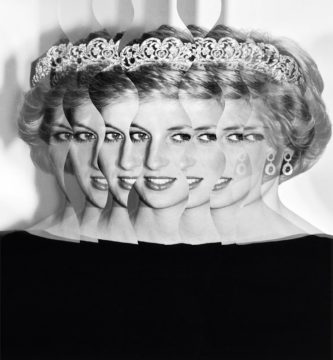Tanya Gold in New Statesman:
 At Althorp, the Northamptonshire estate where she lived as a young woman, there is a drawing of Diana Spencer, round-faced and smiling. It was made when she was a child, and unhappy: her mother, Frances, had left the family. It is a private family artefact, and something else too: an early study in iconography, in making Diana something she was not. Her marriage to Prince Charles made Diana a paradigm. A queen exists to be a paradigm – that is her job – but an unhappy, divorced almost-queen, who died while being chased by the mass media that both deified and abused her, is another category of paradigm entirely. The drawing reminds me that she was once a private individual, but she became something else.
At Althorp, the Northamptonshire estate where she lived as a young woman, there is a drawing of Diana Spencer, round-faced and smiling. It was made when she was a child, and unhappy: her mother, Frances, had left the family. It is a private family artefact, and something else too: an early study in iconography, in making Diana something she was not. Her marriage to Prince Charles made Diana a paradigm. A queen exists to be a paradigm – that is her job – but an unhappy, divorced almost-queen, who died while being chased by the mass media that both deified and abused her, is another category of paradigm entirely. The drawing reminds me that she was once a private individual, but she became something else.
In the 25 years since her death, and the insatiable public mourning that followed, and the royal family’s dash to London to preserve their power, Diana the woman has been obscured by interpretations of Diana “the People’s Princess”. There are films, television shows, memoirs, awards, documentaries, conspiracy theories. There are commemorative plates, coins, dolls, tubs of margarine. There are physical memorials – monuments, statues, and a fountain – where the besotted still pay their respects. Even so, the Diana trail has become strewn with tumbleweed. She is now a collection of emotions and memories and scattered artefacts: a myth. What, if anything, is left of her?
More here.
